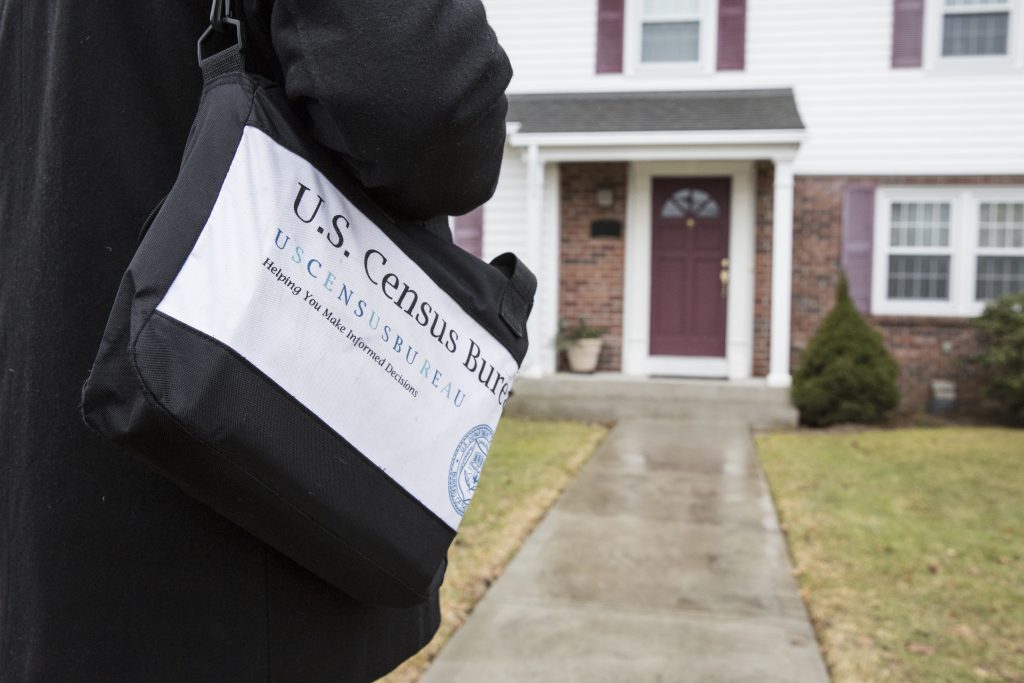US Census Analysis: Which Michigan Cities Grew And Shrank Since 2010?
The US Census Bureau released 2018 detailed population estimates that foreshadow how the 2020 Census count may affect Michigan

Today, the US Census Bureau released detailed population estimates for 2018, an indicator for how the all-important (and already controversial) 2020 Census population count may affect Michigan’s electoral distribution, federal funding levels and business development.
These data released today are estimated from a sample of the population. The federal government is currently preparing for the full 2020 Census when it will attempt to count and gather demographic information on the nation’s population.
The 2020 Census will impact state and local municipalities in a number of ways. Nationally, it determines the distribution of the US House of Representatives and electoral votes. On the state level, it plays into how House and Senate districts are drawn. But the Census also informs where funding is distributed for infrastructure projects, hospitals, schools and more than 100 governmental programs like Supplemental Nutrition Assistance Program (commonly known as food stamps) and Pell grants to help pay college tuition. Census data can also impact where new retail stores and restaurants locate as businesses typically rely on this information to determine potential customers.
So, what do the 2018 estimates tell us about how Michigan has changed since the last full count in 2010? WDET analyzed the data and compared it to 2010 US Census data. Here are some highlights, see the full analysis by total estimated population change and percent change below:
- Over eight years, Ann Arbor pulled ahead of Lansing in estimated growth In 2010, Lansing was the fifth most populous municipality in Michigan. While Michigan’s capital is estimated to have grown, Ann Arbor (which was ranked 6th in 2010) grew more. In 2018, Ann Arbor beat out Lansing as the fifth most populous municipality in Michigan.
- Grand Rapids, Macomb Township see boom? The two municipalities are estimated to have seen the largest total population increase in the state. In 2010, Macomb Township had 79,580 people and now it’s estimated to have 90,758 people.
- Detroit and Flint lost the most total population After them, Dearborn, Saginaw, Livonia, Westland and Dearborn Heights saw the most significant loss.
- Lyon Charter Township estimated boom The smaller municipality saw the largest estimated population percentage increase since 2010 in the state. It grew by 42 percent from 14,545 in 2010 to an estimated 20,628 in 2018.
Here is WDET’s full analysis of the 2018 US Census population estimates:
Top Estimated Population Increase, 2010 – 2018
- Grand Rapids, 12,177 increase (6% estimated growth)
- Macomb Township, 11,178 increase (14% estimated growth)
- Ann Arbor, 7,956 increase (7% estimated growth)
- Shelby Charter Township, 6,201 increase (8% estimated growth)
- Lyon Charter Township, 6,083 increase (42% estimated growth)
- Allendale Charter Township, 5,978 increase (29% estimated growth)
- Novi, 5,727 increase (10% estimated growth)
- Georgetown Charter Township, 5,511 increase (12% estimated growth)
- Pittsfield Charter Township, 4,221 increase (12% estimated growth)
- Lansing, 4,130 increase (4% estimated growth)
Top Estimated Population Decrease, 2010 – 2018
- Detroit, 41,115 decrease (-5% estimated loss)
- Flint, 6,491 decrease (-6% estimated loss)
- Dearborn, 3,820 decrease (-4% estimated loss)
- Saginaw, 3,185 decrease (-6% estimated loss)
- Livonia, 2,971 decrease (-3% estimated loss)
- Westland, 2,374 decrease (-3% estimated loss)
- Dearborn Heights, 2,158 decrease (-4% estimated loss)
- Taylor, 1,983 decrease (-3% estimated loss)
- Bay City, 1,913 decrease (-5% estimated loss)
- Lincoln Park, 1,627 decrease (-4% estimated loss)
